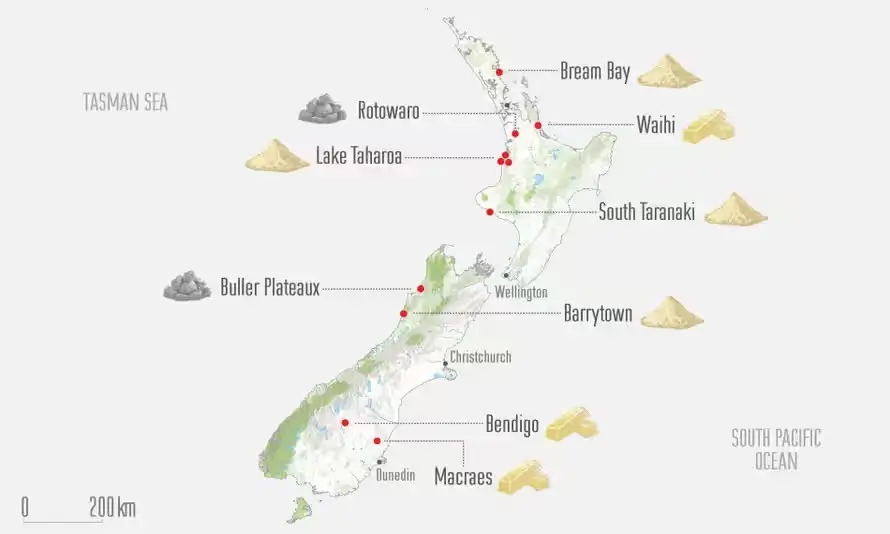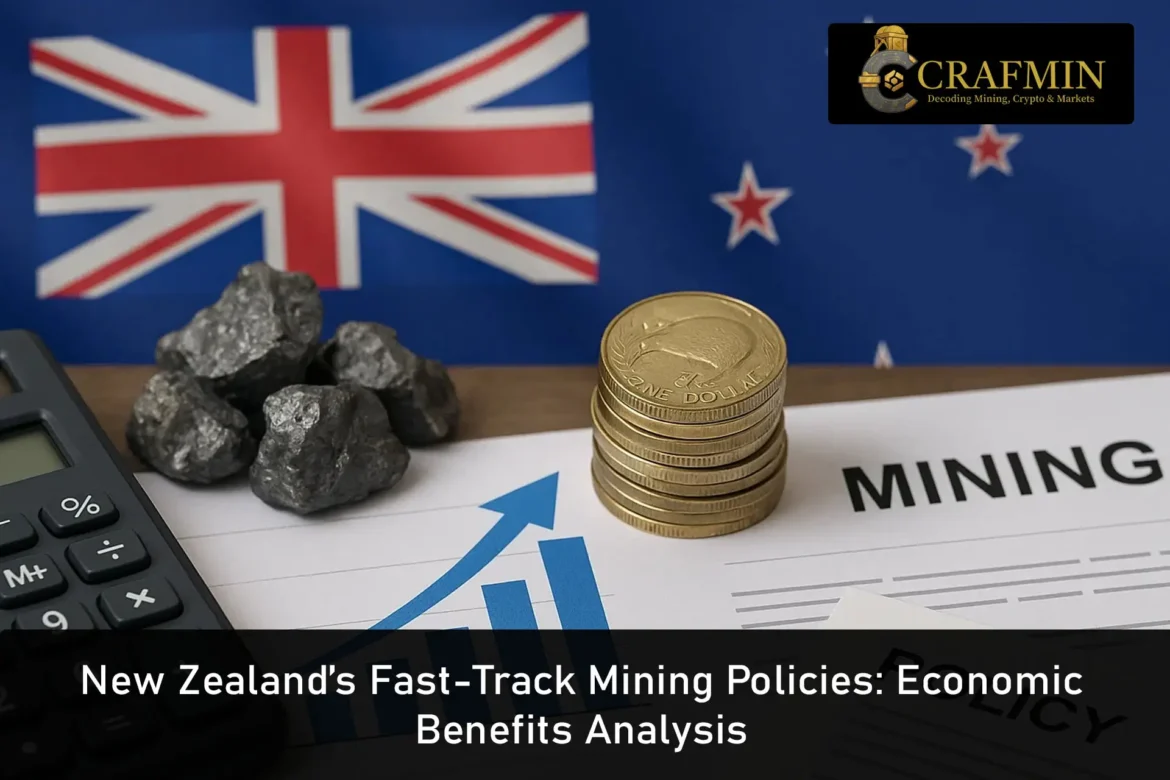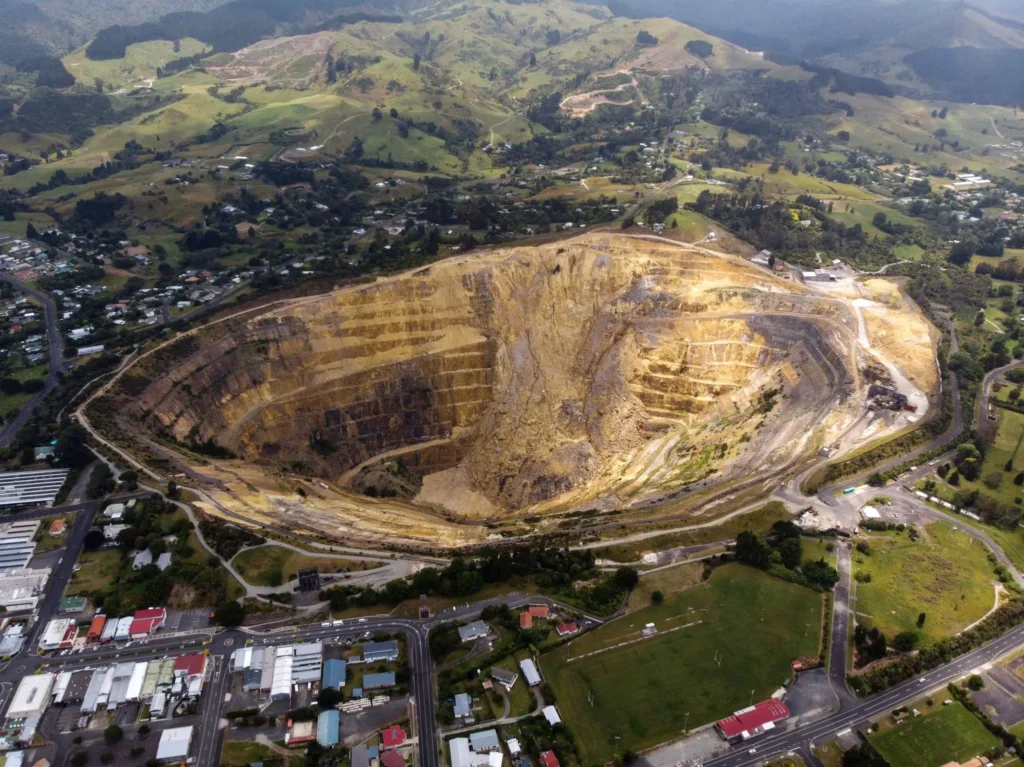Photograph: Marc-Philipp Keller/Alamy
New Zealand’s government has adopted a “fast-track” system of granting permits for mining and infrastructural projects seeking to award advanced economic development and reduce bureaucratic obstacles. But what do the statistics reveal regarding the benefits? And what is the tradeoff?
Much of the controversy revolves around the assertion that there is significant value for the country if approval processes are expedited. The gains, however, are being contested by activists, economists, and some former policy makers by taking the long-term impacts into consideration.
What Does the Plan Entail?
In January, new policies were published where mining projects could apply for an expedited permit process which would reduce the time frame from 12-18 months to 12-18 months. In exchange, developers have to follow “best practice” environmental measures – although critics argue best practice is ambiguous and lacks clarity.
The government has made venturing pitches with projections.
- Projected increase in economic activity: 7 billion dollars over a decade.
- 5,000 new jobs catered: Directly within the construction and early operational phases, and
- 5,000 new jobs catered
- Approval times drop significantly: 24 months to under a year.
Economic Analysis: What the Numbers Show
A recent Treasury report estimates that fast-tracking could add around NZ$500 million to NZ$700 million annually to GDP during peak construction periods (2026-2028).
Here’s a snapshot of their forecast:
| Year | Estimated GDP Impact (NZ$ million) | Estimated Jobs (direct + indirect) |
| 2025 | 200 | 1,200 |
| 2026 | 500 | 3,500 |
| 2027 | 700 | 5,000 |
| 2028 | 650 | 4,600 |
| 2029 | 400 | 2,800 |
Source: New Zealand Treasury, 2024 analysis
What’s driving these numbers? Mostly large-scale mining proposals in Otago and the West Coast, as well as rare earths exploration near Nelson.
Environmental Issues in Focus
New Zealand’s economic numbers for the plan to fast-track its mining may appear healthy, but environmentalists warn that the nation should be cautious. Various nature conservation organizations have made their voices heard with the warning that it could damage valuable natural habitats if approvals are accelerated without proper strictures.
One issue that’s raised controversy is that almost a fifth of the suggested projects might overlap with land that’s been identified for conservation — areas that are renowned for rare wildlife or sensitive habitats. That’s according to an initial analysis released by the Ministry for the Environment.
And then, of course, there’s the climate aspect. Independent estimates are that if the mining projects proceed at the planned rate, New Zealand would experience a modest increase in overall emissions — something in the order of a 0.5% increase in five years, largely due to increased extraction and transportation activities.
Activists are calling for tighter controls. There are many who say if the government does want to speed up the mining, at least make the environmental offsets mandatory, not voluntary. As one of them stated: “Without strong conditions, we risk selling short-term jobs for long-term harm.”
Cost-Benefit Snapshot
Here is a summary of what independent analysis from NZ Institute of Economic Research (NZIER) implies.
| Factor | Estimated Gain/Cost (10 years, NZ$ billion) | Notes |
| Direct GDP benefit | +7.0 | Government estimate aligns with Treasury modelling |
| Environmental remediation | -1.2 | Includes clean-up and offset costs |
| Tourism and biodiversity loss | -0.8 | Assumes minor impact on eco-tourism regions |
| Net benefit | +5.0 | Before factoring unforeseen costs |
Voices on Both Sides
Supporters cite economic resilience. “For regional towns, particularly on the West Coast, this is a lifeline,” one mining industry representative said. “These projects will create well-paid jobs where they’re desperately needed.”
Opponents aren’t convinced. Dr. Helen Tarrant, a senior ecologist, came out bluntly: “Short-term gains could lock in long-term damage. Once habitats are gone, they’re gone.”
Public Opinion: Divided but Watching
A Colmar Brunton poll last month discovered:
- 48% support fast-track mining approvals
- 35% oppose
- 17% undecided
- Interestingly, support was highest in areas with a mining history — West Coast (68%) and Southland (61%) — but lowest in urban areas such as Wellington (28%).

Map showing key regions for fast-tracked mining in NZ. ( Illustration: Anthony Calvert/The Guardian)
What Next?
The initial batch of projects under the fast-track system will be considered by a specialist panel, with final approval in early 2026. The government has vowed six-monthly public updates on the scheme’s progress, including any environmental conditions breaches.
At the same time, both sides’ groups are preparing. Investment pitches by industry groups and legal action by conservation groups in case approvals coincide with protected territory are on the cards.


